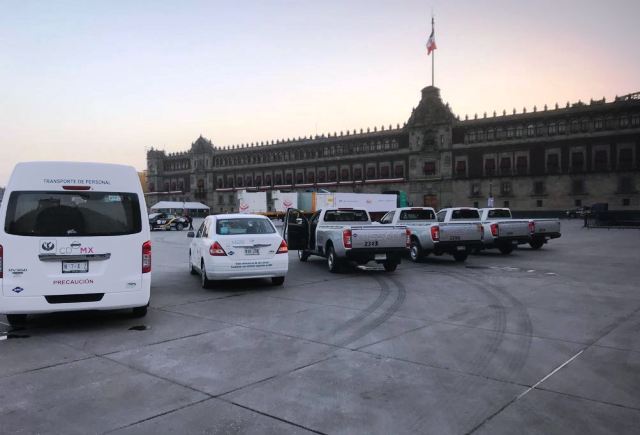The natural gas and alternative fuel industry plans to give continuity to the different initiatives underway throughout Mexico and will gather its efforts next year in an event that seeks to further boost the sector: AltFuels Mexico 2018. The event will take place on 23-26 April at the World Trade Center of Mexico City with the presence of experts, organizations and companies from all over the world, as well as more than 170 exhibitors and an attendance of 5,500 visitors.
One of these recent initiatives is taking place in the country’s capital. The head of government of Mexico City, Dr. Miguel Angel Mancera Espinosa, presented on November 15 a fleet of alternative fuel vehicles, including hybrid patrols (electricity-gasoline) of the Department of Public Safety and electric taxis, as well as vehicles of different government dependencies converted to natural gas by the Mexican company Gazo. In total, more than 500 units were displayed on the city’s Zócalo.
Mancera said that Mexico City remains firm in its commitment to contribute to the reduction of polluting emissions and maintain its position in the C40 group, so it prioritizes having other alternative fuel options, that is, not necessarily diesel or gasoline. “We have to meet a goal of reducing polluting effects in the city. A very important part we have to address is the transport, which not only is public transport (buses), but also daily use vehicles,” he said.
To achieve these objectives, the government has opted for two schemes to power its fleet, electric or hybrid vehicles and natural gas vehicles. As for the CNG units exhibited in the Zócalo, they belong to different Mexico City’s agencies, including the Metro and the Administrative Office, and were presented by the Chief administrative officer Jorge Silva Morales and Gazo Commercial Director Rolando Madrazo Martín.
To date, Mexico City’s vehicle fleet has converted almost 800 units to CNG. Gazo is in the process of converting about 200 government vehicles in this first stage. “We will continue with the transformation, we should end the year with about 160 units converted, the trend is 200 initials at this stage,” said Madrazo and added that the Administrative Office has the goal of making a transition that can reach up to 8,000 vehicles of Mexico City’s fleet.
The head of government also informed during the ceremony that the STC (massive transportation system) or Metro has a natural gas refueling station that can serve up to 300 vehicles on a monthly basis, “it is an Italian technology that will avoid the need to install the traditional CNG stations.”
In this sense, the Autogas GN and Neomexicana companies presented the government with a mobile station solution. The General Director of Autogas GN Javier Orozco exhibited a tractor and two hydraulic units to demonstrate the technology. “The idea is that both mobile and dual fuel stations begin to be operational next year, which will boost the potential of the Mexican market,” said Madrazo.
“I believe that all this momentum that the city’s government is generating by converting its own vehicles is an example for the other local governments of the country. Obviously we already see a positive trend that is gaining strength with hybrids and NGVs. The only thing missing are subsidies to public transport, which is also being promoted by the government, but it is very important to work to facilitate the conversion process with tax incentives for companies,” added Gazo’s Commercial Director.
According to Madrazo, Mexico is in a current growth process, where the leading companies take care of the safety at the facilities, with qualified and certified vehicle conversion workshops. “The industry has about 30 to 50 companies that are joining in different associations, such as the AMGN, and always supporting the growth of the sector,” explained Madrazo.
Mancera also stressed that it is important to keep a permanent and long term expansion and that the projects and works must continue during 2018.
Source: Mexico City/Gazo

